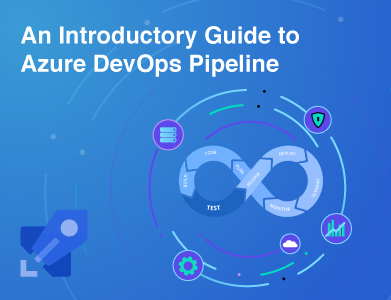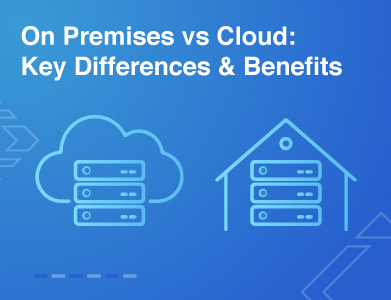Expertise
Azure DevOps is a pivotal tool for developers and teams aiming to streamline their DevOps for Azure processes. Many companies are already utilizing this suite to optimize their software development workflow.
Yet, utilizing Azure DevOps to its fullest requires more than just knowledge of its components. It demands an understanding of best practices that can leverage these tools for improved productivity and project management. And this guide will guide you with the same.
By the end of this blog, you will understand Azure DevOps and the best practices leading to your project success.
What is Azure DevOps?
Azure DevOps is a comprehensive suite designed to support the software development lifecycle from start to finish. It integrates a set of services and tools that manage your projects through planning, development, testing, and deployment.
This integrated environment supports both cloud-based and on-premises deployments, allowing flexibility depending on your project's needs. Whether you prefer working through a web interface or managing services via a client, Azure DevOps accommodates various workflows.
Main Features of Azure DevOps
Azure Boards
This feature enables planning, tracking, and discussing work across teams. You can ensure that project management is streamlined and efficient using this feature.
Azure Repos
Your team can manage code changes easily with this feature. As it contains Git repositories or Team Foundation Version Control (TFVC) for source control.
Azure Pipelines
Azure pipelines offers continuous integration and continuous delivery (CI/CD) capabilities that work with any language, platform, and cloud. It connects to GitHub or any Git provider for continuous deployment.
Azure Test Plans
A suite of tools for testing applications, including manual and exploratory testing tools, helping thorough quality checks before deployment.
Azure Artifacts
Enables teams to share packages from public and private sources, integrating package sharing into CI/CD pipelines. This supports a wide range of package formats such as Maven, npm, NuGet, and more.
These were the primary features of Azure DevOps that can streamline your software development workflow. Now, let us look at the best practices of Azure DevOps.
Explore Further: Azure Function Integration
Best DevOps Practices for Efficient Azure DevOps Management
Project Planning
When beginning project planning, it is essential to configure teams along value streams that your organization aims to deliver. Hire azure developers to form a team of 6 to 12 developers for each development group. This is to support rollup to project management feature teams.
Establish a sprint cadence for all teams within your product group. Also, plan for the next 6 to 12 months by defining at least six or more iterations. This structured approach helps in managing backlog items effectively.
Sprint Management
For effective sprint management, much of the planning involves negotiation between the product owner and the team. This is to determine the work focus for the upcoming sprint.
Time-box your planning meetings to ensure efficiency and set a sprint goal that aligns with the team's objectives. During sprints, use the task board and sprint burn-down chart to monitor progress and make necessary adjustments to stay on track. Implementing a bug cap can help maintain a manageable number of bugs, ensuring that the team does not carry bug debt for too long.
Tagging System
Implementing a strategic tagging system can significantly enhance resource management in Azure DevOps. Tags are metadata elements applied to Azure resources as key-value pairs. They help in identifying resources based on settings relevant to your organization
Use tags like Environment = Production to track deployment environments and group costs effectively. However, stay aware of limitations like maximum number of tag name-value pairs and the sensitivity of tag values.
Regularly auditing your tags and using Azure-recommended tagging conventions can help maintain an organized and efficient tagging system.
Dependency Management
Managing dependencies is crucial for maintaining smooth operation across various components of your Azure DevOps environment. Use overlay ports with vcpkg to manage build dependencies effectively.
Azure Artifacts plays a vital role in centralizing repository management, simplifying the storage and sharing of packages across your organization. Integrate Azure Artifacts with your build pipelines to automate the restoration and consumption of packages during the build process, enhancing productivity and collaboration.
Regular updates and configurations of your project's package sources ensure that builds resolve dependencies efficiently.
Implementing Continuous Integration and Continuous Deployment (CI/CD)
One of the fundamental pillars of efficient DevOps is the adoption of CI/CD practices. Set up CI triggers within Azure Pipelines to automatically initiate builds and tests whenever code changes are committed to your version control system.
This allows you to validate your codebase consistently. Thus, you can catch issues early and minimize cloud integration challenges. Configure CD triggers to automatically deploy validated packages to your staging or production environments. This continuous deployment strategy allows you to rapidly release new features and updates speeding up your time-to-market.
Incorporate Security Practices
Integrate security checks and scans into your CI/CD pipelines. This enables addressing security considerations from the initial stages of development. This proactive approach helps identify and mitigate potential vulnerabilities before they reach production environments.
Define and enforce security policies and gates within your CI/CD pipelines. These gates can stop deployments from proceeding if they do not match the security standards. Regularly update your dependencies and development tools to ensure that you are utilizing the latest security patches and mitigation's.
Choose your Work Item Types
Choosing the right work item types in Azure DevOps is crucial for an organized and effective workflow. The choice depends on your project's methodology, such as Agile, Waterfall, and Scrum.
For instance, in the Agile process, you would typically use User Stories to capture requirements, Bugs to track defects, and Features to group related stories. Each team can also configure how they manage Bugs relative to User Stories or Tasks. Selecting the appropriate work item types aligns your efforts with industry practices, streamlining collaboration and project delivery.
Add Link Dialog
Azure Boards allows you to link related work items using the "Add Link" dialog. The Predecessor/Successor link types are useful for tracking dependencies between tasks.
You can streamline linking by adding tags to dependent work items, creating a query based on those tags, and then adding the required links. The "Add Link" dialog visually represents how work items are linked, typically using the Successor link type. Linking work items improves traceability, dependency management, and collaboration within your Azure DevOps workflow.
Read More: Top DevOps Trends
Wrapping Up
These were some of the best practices for utilizing Azure DevOps. Remember that just following best practices is not enough. You must continuously explore, learn, and enhance your workflow to stay ahead in the technological race.
Want to get the best out of Azure DevOps? We can help. At Prioxis, we offer comprehensive Azure DevOps consulting services with a project success rate of 99%.
Avail Your Free Consultation Today
01What is Azure DevOps good for?
Azure DevOps optimizes source control, build, test, and release processes for continuous delivery. It helps implement DevOps practices throughout the software lifecycle, ensuring high-quality code and easy access for teams.
02Will Azure DevOps stay relevant?
Yes, Azure DevOps will remain a leading solution by adopting AI-driven automation and advanced security. Leveraging its evolving capabilities will drive innovation and efficiency for DevOps professionals.
03What is DevOps?
DevOps brings together developers, IT operations, business leaders, and stakeholders. They work collaboratively to create, develop, test, deploy, and manage software that delivers value to the business and users.
04How do you structure Azure DevOps projects?
Create default teams for each project, and separate teams for specific features. This allows teams to work independently and collaborate easily. Use Iteration Paths to define sprint timelines, usually 1-4 weeks long. Assign tags to work items so team members can search, filter boards, and backlogs based on tags.
.jpg)









